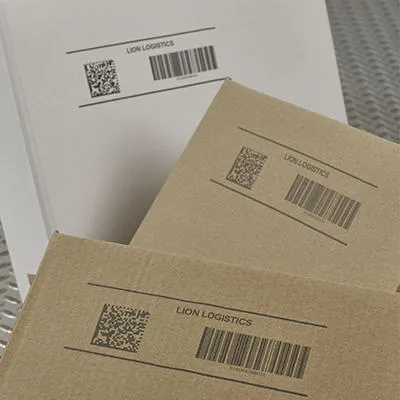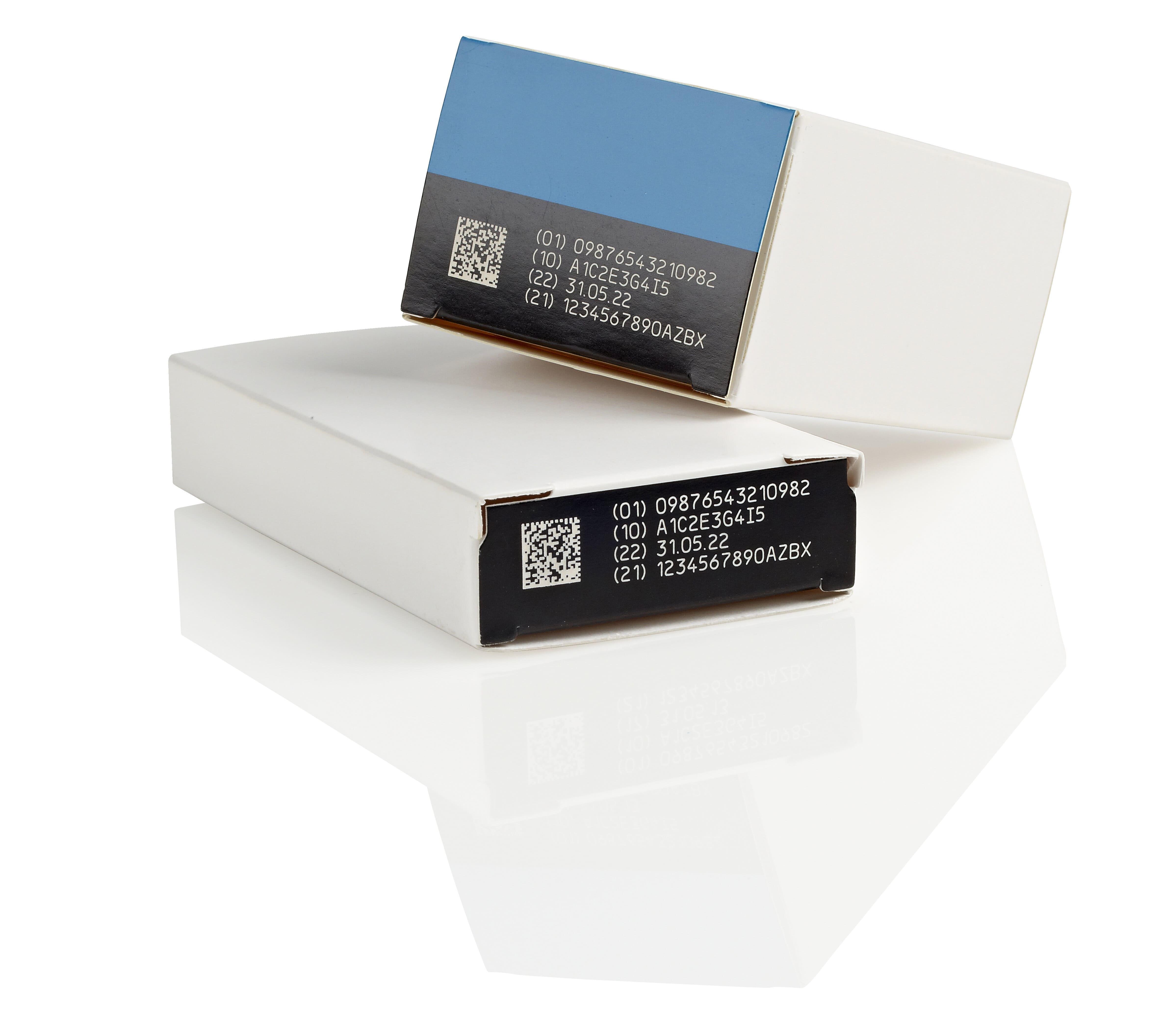What are barcodes and what are they used for?
Barcodes are everywhere. Think back to your childhood - you probably looked at those strange lines on the bottom of your cereal box and wondered what they were saying and what exactly they did.
Well, barcodes, or "machine-readable codes" (MRCs) are collections of symbols that can be scanned and read electronically by a computer. Today, as we move full-speed into the Industry 4.0 age and beyond, they're so much more than just pulling up UPC codes at the grocery store.
They are used to encode products with information such as product numbers, serial codes and batch numbers. Barcodes have been an industry standard and have been widely used for improved efficiency, safety and reliability for the better part of 50 years ever since they were first used to scan a pack of Wrigley's gum at Marsh Supermarket in the small town of Troy, Ohio, back in 1974.
Today, barcodes come in all shapes and sizes and play a key role in stock management, logistics and consumer engagement. They help businesses and consumers alike quickly identify and track products as they flow through the supply chain.
The evolution of barcode technology
While the origins of the barcode started with that humble pack of gum, today, they are capable of so much more than pulling product prices. Barcodes have evolved to suit all types of different industries' individual needs and adapt to technological advancements such as mobile phone scanning.
In fact, if you have a smartphone, you have a barcode scanner in your pocket right now - and don't let anyone tell you that you need an app for that.
These different barcodes look and act differently; they can alter packaging types, printing methods, and the decoding equipment needed to read them.
The evolution-driving industries include, but are not limited to:
- Retail Point of Sale (POS)
- Retail Inventory Management
- Industrial and Manufacturing
- Healthcare and Pharmaceuticals
- Supply Chain & Logistics
- Packaging
Many companies within these industries have installed Domino products for the specific use to place barcodes and QR codes for decades.
What are the most common types of barcodes?
Thanks to their use by supermarkets, the most commonly used barcodes are one-dimensional barcodes. 1D barcode symbols consist of a zebra-like pattern of stripes - and have been deployed on everything from that Wrigley's pack of gum to the cereal box in your childhood.
They include some of the most well-recognized barcode types, such as GTIN 8 and GTIN 13 codes (often still referred to as EAN and UPC bar codes) - the types you'd see on most products scanned at the supermarket.
However, growing regulations around consumer safety and product information, alongside the demand for improved warehouse and operations efficiencies, have created a need for barcodes to hold more pieces of information. This information needs to be both human and machine-readable to allow scanners and cameras to easily read and extract the required data. Consider fresh goods producers who will need information such as batch numbers, expiration dates and weight etc., encoded onto barcodes.
Generally, the term barcodes should only refer to the 1D variations as they physically look like "bars". However, this word is actually a colloquialism! The preferred terminology is "machine-readable codes" and can be used for both the 1D and 2D (two dimensional) varieties. However, people still use the term barcode to describe them. With that in mind, let's look into what 2D barcodes actually are and how they are coming to replace 1D barcodes.

What are 2D barcodes and how do they work?
QR Codes, or Quick Response Codes are also known as 2D barcodes and they are essentially the next step in the evolution from 1D barcodes. Basically, they look like small squares that contain countless small, individual squares lines or dots inside.
Originally invented in 1994, due to their larger size they are capable of storing more information. Compared to 1D barcodes, they're easier to scan, more robust and hold much more information in a smaller area.
Due to larger real estate, 2D Barcodes can store images, text, web addresses, geo-coordinates, voice and other examples of binary data. This makes 2D much more versatile than the original 1D codes – especially with the volume of data currently necessary for products to be compliant with ever-changing laws.
Whereas most 1D barcodes contain 13 or 14 characters and take a relatively large amount of packaging real estate, 2D barcodes usually contain around 70 characters despite being less than 20% of the size.
In addition, 2D QR codes have something that the 1D barcodes don't - built-in error correction. This means that the codes are much more robust with built-in redundancy in case of code damage.
So, even in the event of a stain, spot, or even an issue with much of the code missing from the packaging, a data correction level allows for the code to be recognized by scanners.

The challenges of using barcodes
When humans read something, it's open to interpretation. Whereas for barcodes, there is no interpretation - each machine will read and understand the same thing in exactly the same way. This is excellent for consumers and providers as it means a guaranteed read every time, drastically improving efficiency.
However, this is only guaranteed if the manufacturing/packaging operation created the barcode correctly. A small mistake higher up in the chain can snowball into more significant issues further down the line, derailing the entire production process without anybody noticing.
With so many different uses and growing regulatory demands on product packaging, it's critical to choose the right barcode. However, as there are so many to choose from, this can often be confusing. This confusion can lead to mistakes at any point in the process and have a noticeable impact on efficiency.
This means that the chain is only as strong as its weakest link. The "holy trinity" of 2D - printing, handling, checking (with vision systems) - must be optimized to prevent these small mistakes from happening in the first place. Even the slightest imprecision can affect code quality drastically, resulting in rejections, aggregation failures, and impacting OEE (overall equipment effectiveness) and overall yield.
These potential risks are key reasons why Domino provides turnkey solutions such as the Cigarette Pack Coding Station (CPCS), which aim to minimize errors and rejections.
The Importance of coding barcodes
If it did anything, the worldwide COVID-19 pandemic accelerated the adoption of the digital economy - even in places where it hadn't yet been fully implemented. With an influx of online shopping and countless brands scrambling to sell their products online in response to the lockdowns, brands who couldn't adapt were left flat footed. As a result, the prevalence of 2D codes has risen dramatically because it has shown exactly where inefficiencies lied within the supply chain of old tried and true industries.
With retailers of all sizes needing to track, trace, process and store goods for both domestic and international markets, 2D codes will come to be a necessity due to the volume of data required. Correctly coding these barcodes will ensure improved traceability, supply chain efficiency and consumer protection. The use of internationally based standards, such as GS1, also benefits interoperability between different stakeholders and countries.
If you would like to know more about how Domino's solutions could help your business, get in touch with our customer service team.